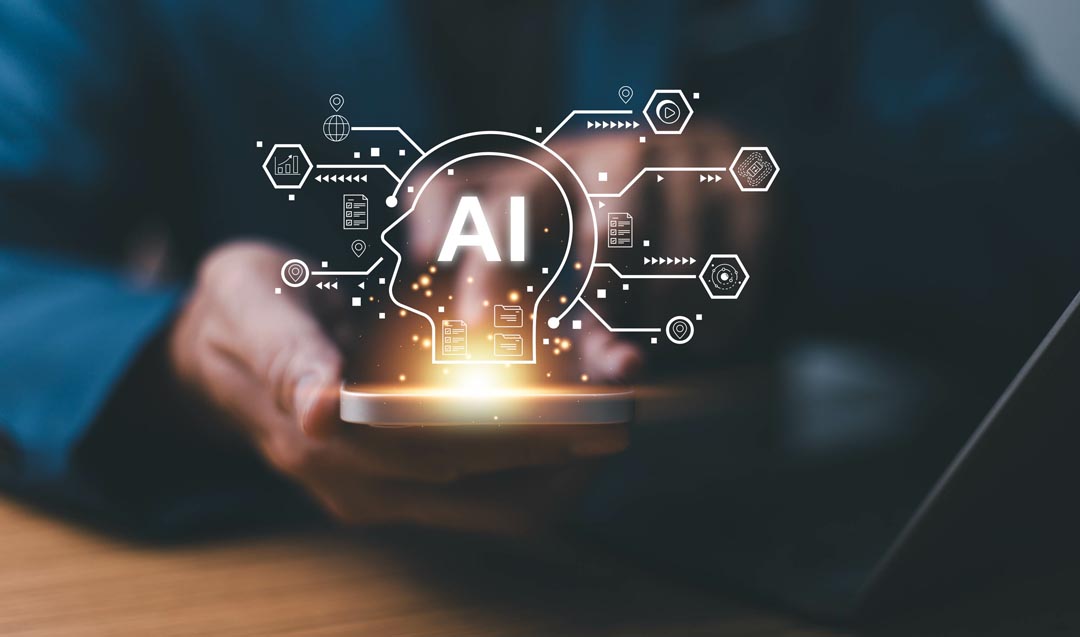AI in the workplace: beware the risks and seize the opportunities, says Ravinder Tulsiani
While artificial intelligence (AI) presents organisations with the promise of unparalleled efficiencies and capabilities, it also presents some complex challenges and risks. This positions AI as both a beacon of innovation and a field filled with ethical dilemmas including bias, privacy concerns, job displacement and the dangers of overreliance on digital systems.
AI offers immense opportunities for enhancing efficiency, spurring innovation and fostering business growth
Integrating AI into the workplace requires a careful balance between leveraging its potential for innovation, growth and a re-imagined dynamic, while also addressing the risks it poses. It is imperative for organisations aiming to maintain their competitive edge and resilience to adopt methodologies that not only mitigate these risks but also ensure that this powerful technology serves to enhance our human workforce and uphold ethical standards, rather than undermining them.
Understanding the risks
Ethical considerations and bias: The impartiality of AI systems hinges on the neutrality of their training data. Biases in historical data can lead AI to perpetuate or amplify these prejudices, necessitating a thorough evaluation of datasets to forestall biased outcomes in recruitment, promotions and customer engagement.
Privacy concerns: AI’s proficiency in analysing extensive datasets raises significant privacy issues. Implementing stringent data governance policies is paramount to protect sensitive information from unauthorised exploitation while leveraging AI’s benefits.
Job displacement: AI’s automation capabilities might result in job displacement, highlighting the importance of retraining and upskilling employees to ensure their indispensability in an AI-augmented workplace.
Dependence on technology: Excessive reliance on AI could expose organisations to technological failures or cyber threats. Establishing contingency plans and maintaining human oversight is essential to balance intuition and machine efficiency.
Mitigating the risks
Mitigating AI-associated workplace risks demands a proactive and encompassing strategy, including:
Implementing ethical AI frameworks: Establishing and adhering to ethical AI guidelines can help counter biases, ensuring fairness for all stakeholders. This involves regular system audits, transparency in AI-driven decisions, and forming AI ethics committees.
Strengthening data privacy measures: Enforcing robust data privacy protocols, such as encryption and access controls, is crucial for safeguarding sensitive data against breaches and unauthorised access.
Fostering a culture of lifelong learning: Addressing job displacement requires investing in training programmes that furnish employees with the competencies to collaborate with AI technologies, emphasising technical and soft skills.
Maintaining human oversight Human supervision is vital for monitoring AI operations, serving as a safety net for error correction and intervention to ensure ethical and equitable outcomes.
Unlocking the opportunities
Despite the risks, AI offers immense opportunities for enhancing efficiency, spurring innovation and fostering business growth, such as:
Enhancing operational efficiency: Automating routine tasks with AI frees employees for more complex and fulfilling work, boosting productivity and job satisfaction.
Driving innovation: AI’s advanced data analysis capabilities can unveil previously inaccessible insights, propelling innovation across product development, marketing and customer service.
Personalisation at scale: AI facilitates personalised customer experiences on a large scale, improving satisfaction and loyalty by tailoring interactions to individual preferences.
Predictive analytics for decision making: Leveraging AI for predictive insights enables businesses to anticipate market trends and customer behaviours, informing strategic decision making.
Harnessing AI’s full potential
Maximising AI’s benefits requires a strategic approach that includes continuous learning, fostering AI literacy across the organisation, committing to ethical AI usage, and promoting collaboration.
Real-world examples of AI in the workplace
From healthcare’s predictive patient care to financial fraud detection and customer service enhancements via chatbots, AI is demonstrating its transformative potential across various sectors, underscoring its role in driving efficiency and innovation.
Strategies for successful AI integration
Integrating AI effectively into the workplace transcends technological implementation, necessitating a holistic view that encompasses organisational culture, employee engagement, and ongoing improvement. Essential strategies include securing leadership support, engaging and training employees, starting with pilot projects, and forging partnerships to enhance AI capabilities.
Looking forward: the future of AI in the workplace
The intersection of AI and human intelligence is shaping a future workplace characterised by collaborative innovation and efficiency. However, this future also emphasises the need for ethical AI design and policies to ensure a fair transition into this new era.
Conclusion
Navigating AI’s integration into the workplace involves understanding and mitigating associated risks while embracing its opportunities for growth and innovation. Achieving successful AI integration hinges on a balanced approach that marries strategic implementation with ethical practices and continuous adaptation. The synergy between human and artificial intelligence promises a transformative impact on the workplace, enhancing productivity, creativity and overall wellbeing.
Ravinder Tulsiani is Director SE Learning




